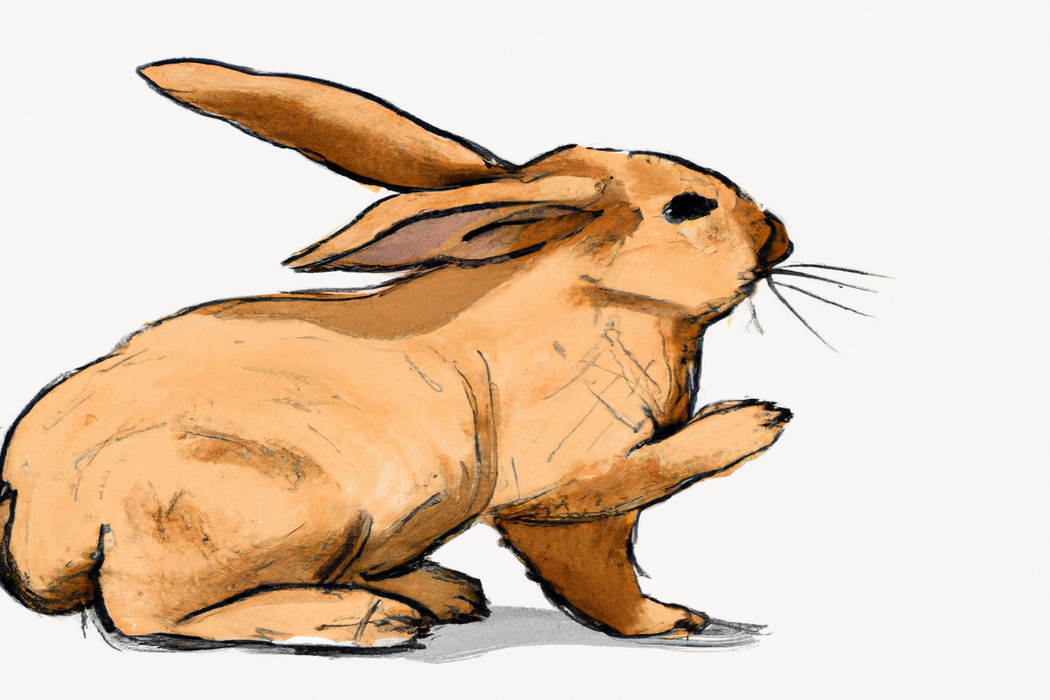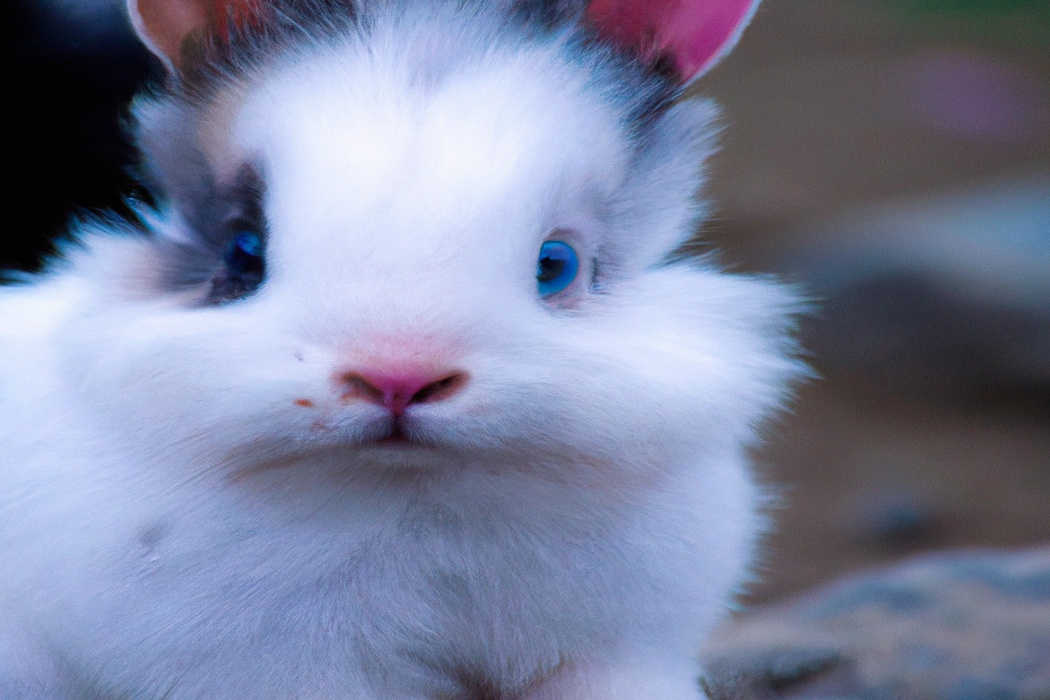How To Syringe Feed a Rabbit – Expert Tips for Success
Key Takeaways:
- Use a syringe with a small needle to feed a rabbit safely and accurately.
- Gradually introduce the food into the rabbit’s mouth, taking care not to overfeed.
- Squirt the food slowly and gently, allowing the rabbit to swallow between each syringe-full.
- Seek veterinary guidance or training if you are unsure about how to syringe feed your rabbit properly.
Are you a concerned rabbit parent wondering how to ensure your furry friend gets the nutrition they need? Look no further! Syringe feeding may seem daunting at first, but with the right knowledge and techniques, you can successfully support your rabbit’s health and well-being.
In this article, we’ll guide you through the process of syringe feeding a rabbit, from understanding why it’s necessary to administering the feeding and troubleshooting common challenges.
So, let’s get ready to empower you to become your rabbit’s personal nutritionist!
| Steps | Description |
|---|---|
| Gather Supplies | Gather a syringe, appropriate food, and water for flushing the syringe. |
| Prepare the Syringe | Fill the syringe with the appropriate food mixture, ensuring there are no air bubbles. |
| Hold the Rabbit | Gently restrain the rabbit, making sure it is comfortable and secure. |
| Administer the Food | Slowly introduce the syringe into the side of the rabbit’s mouth, aiming for the back of the throat. |
| Monitor and Reassess | Monitor the rabbit’s response and adjust the feeding method or food consistency as needed. |
Understanding the Need for Syringe Feeding
Syringe feeding is necessary for rabbits when they are unable to eat or drink on their own.
Why Syringe Feeding is Necessary for Rabbits
Syringe feeding is necessary for rabbits in certain situations when they are unable or unwilling to eat on their own.
It can happen due to dental issues, illness, or during recovery from surgery.
Syringe feeding ensures that the rabbit receives the necessary nutrients and fluids to maintain their health and support their recovery.
It is important to consult with a veterinarian and learn proper syringe feeding techniques to ensure the rabbit’s well-being.
When Syringe Feeding is Required for Rabbits
Syringe feeding becomes necessary for rabbits when they are unable to eat or drink on their own. This typically happens when the rabbit is recovering from surgery, illness, or dental problems that affect their ability to eat.
Syringe feeding provides vital nutrition and hydration in these situations, ensuring the rabbit’s health and well-being.
If your rabbit’s appetite decreases or they stop eating altogether, consult a veterinarian to determine if syringe feeding is needed.
Preparing for Syringe Feeding
Before you begin syringe feeding your rabbit, it’s important to gather the necessary supplies, create the feeding solution, and ensure proper hygiene.
Gathering the Essential Supplies
To syringe feed your rabbit, you’ll need a few essential supplies.
Make sure to gather the following items before you start:
- Syringe: Purchase a small oral syringe from your local pharmacy or pet store. Aim for a size that can hold around 5-10 milliliters of liquid.
- Critical Care Formula: This specialized rabbit food is designed for syringe feeding. Pick up a bag from your veterinarian.
- Warm Water: Dilute the critical care formula with warm water, following the instructions on the packaging.
- Towels or Blankets: Prepare a comfortable and secure space where you can place your rabbit while syringe feeding. Use towels or blankets to make it cozy.
- Latex Gloves: Wearing gloves will help maintain hygiene and prevent the spread of bacteria.
Remember to consult with your veterinarian before attempting syringe feeding, as they can provide additional guidance and specific instructions for your rabbit’s needs.

Creating the Syringe Feeding Solution
Creating the Syringe Feeding Solution for your rabbit is a simple process.
First, mix the appropriate amount of water or electrolyte solution with the powdered rabbit food recommended by your veterinarian.
Stir well until completely dissolved.
Next, use a syringe without the needle to draw up the solution.
Make sure it is at room temperature to prevent discomfort for your rabbit.
Finally, gently place the syringe into the side of your rabbit’s mouth and slowly depress the plunger, allowing them to swallow the liquid at their own pace.
Offer small amounts at a time to avoid overwhelming them.

Ensuring Proper Hygiene
Proper hygiene is key when syringe feeding a rabbit.
Make sure to wash your hands thoroughly before and after handling the syringe and feeding equipment to prevent the spread of bacteria.
Clean the syringe and feeding equipment with hot soapy water or a pet-safe disinfectant and allow them to air dry.
Use fresh, clean water and food for each feeding session, discarding any leftovers.
Regularly clean the rabbit’s feeding area to maintain a clean and hygienic environment.

Administering Syringe Feeding to Your Rabbit
To administer syringe feeding to your rabbit, you will need to correctly position your rabbit, master the technique of inserting the syringe, control the flow of food, and monitor your rabbit’s response.
Positioning Your Rabbit for Feeding
When feeding your rabbit, it’s important to ensure they are in a comfortable and secure position.
Here are a few tips for positioning your rabbit for feeding:
- Find a quiet and calm area where your rabbit feels safe. This will help reduce any stress or anxiety during feeding time.
- Place a towel or soft blanket on a flat surface, such as a table or your lap. This will provide a comfortable and stable space for your rabbit.
- Gently hold your rabbit’s head and support their body, making sure they are relaxed and at ease. This will help them feel secure during the feeding process.
- Slowly introduce the syringe or feeding tube into your rabbit’s mouth, taking care not to push too forcefully or cause any discomfort.
Remember, each rabbit is unique, so it may take some time to find the best positioning that works for your furry friend.
Be patient and observe their behavior to ensure they are comfortable throughout the feeding process.
Techniques for Inserting the Syringe
When inserting the syringe to administer feed to your rabbit, there are a few techniques you can use.
Firstly, make sure the syringe is filled with the appropriate amount of food and is at room temperature.
Gently hold your rabbit’s head in one hand, while using the other hand to carefully insert the syringe into the side of their mouth.
Slowly depress the plunger to release the food, making sure not to force it.
It may take some practice to get the technique right, so be patient and gentle with your rabbit.
Controlling the Flow of Food
Controlling the flow of food when syringe feeding your rabbit is important to ensure a safe and effective feeding process. Here are some tips to help you:
- Always start with a slow and steady flow to allow your rabbit to adjust to the feeding. This will help prevent choking or aspiration.
- Use a syringe with a smooth and controlled plunger to regulate the amount of food being delivered.
- If the flow is too fast, pause and allow your rabbit to swallow before continuing. You can also gently tilt their head upwards to encourage swallowing.
- If your rabbit is resisting the feeding, give them breaks in between to prevent stress and potential aspiration.
- Monitor your rabbit’s behavior and adjust the flow accordingly. Some rabbits may require a slower or faster flow depending on their comfort level.
Remember, always consult with your veterinarian for specific guidance on syringe feeding your rabbit.
Monitoring Your Rabbit’s Response
When you are syringe feeding your rabbit, it’s important to monitor their response to ensure they are tolerating the feedings well.
Keep an eye out for any signs of discomfort or distress, such as excessive drooling, difficulty swallowing, or choking.
It’s also important to keep track of their overall behavior and energy levels.
If you notice any concerning changes, it’s best to consult with your veterinarian for further guidance.
Tips for Successful Syringe Feeding
To ensure successful syringe feeding for your rabbit, here are some important tips to keep in mind.
Gradually Introducing Syringe Feeding
When introducing syringe feeding to your rabbit, it’s important to do it gradually. Start by offering a small amount of food, mixed with water or a specialized formula, on a spoon or shallow dish.
Gently guide your rabbit towards the food using your finger.
As they become more comfortable, you can start using a syringe to slowly feed them. Remember to be patient and go at their pace, offering positive reinforcement and praise throughout the process.
Understanding Your Rabbit’s Feeding Schedule
Understanding your rabbit’s feeding schedule is essential for maintaining their health and well-being.
Rabbits are strict herbivores and need a consistent diet of fresh hay, leafy greens, and a small amount of pellets.
Hay should be available at all times for them to graze on.
Leafy greens, such as kale or romaine lettuce, can be given daily in small amounts.
Pellets should be provided in limited quantities, as too much can lead to obesity.
It is important to monitor your rabbit’s weight and adjust their feeding schedule accordingly.
Offering Treats to Encourage Acceptance
Offering treats can be an effective way to encourage acceptance when syringe feeding a rabbit. Here are some tips to make it successful:
- Choose enticing treats: Pick treats that your rabbit loves and find them appealing. This will increase the chances of them accepting the syringe feeding process.
- Use small, soft treats: Opt for treats that are small and easy to consume. Soft treats are easier for rabbits to eat and can be easily mixed with the syringe feed.
- Offer treats before and after: Start by giving your rabbit a small treat before syringe feeding to create a positive association. Afterward, reward them with another treat as a reward for accepting the feeding process.
- Gradually introduce syringe feeding: Begin by offering treats from the syringe without applying any pressure. This helps your rabbit associate the syringe with positive experiences.
- Be patient and consistent: It may take time for your rabbit to fully accept syringe feeding. Be patient, and offer treats consistently to encourage them to willingly accept the syringe.
Remember, treats should be used as a positive reinforcement tool, not as a primary source of nutrition. Consult with a veterinarian for proper guidance and advice on how to best syringe feed your rabbit.
Potential Challenges and Troubleshooting
Dealing with refusal to eat, handling choking or coughing, identifying signs of digestive issues, and consulting a veterinarian are potential challenges and troubleshooting steps to consider when syringe feeding a rabbit.
Dealing with Refusal to Eat
If your rabbit is refusing to eat, it can be concerning.
Here are a few tips for dealing with this situation:
- Observe their behavior: Take note of any changes in their appetite or behavior. This information can be useful when discussing the situation with a veterinarian.
- Offer tempting foods: Try offering different types of foods to entice your rabbit to eat. Fresh herbs, leafy greens, or treats can sometimes be appealing.
- Consider syringe feeding: If your rabbit continues to refuse food, your veterinarian may recommend syringe feeding. This involves carefully administering a slurry of critical care or mashed pellets directly into their mouth.
- Seek veterinary advice: It’s important to consult with a veterinarian if your rabbit is not eating. They can provide guidance and determine the underlying cause of the refusal to eat.
Remember to closely monitor your rabbit’s eating habits and consult with a professional to ensure they receive proper care and treatment.
Handling Choking or Coughing
If your rabbit starts choking or coughing during syringe feeding, it’s important to act quickly.
Gently remove the syringe from their mouth and place them in an upright position.
You can try patting their back or gently massaging their throat to help them clear the obstruction.
If the choking persists, it’s best to seek immediate veterinary care.
Remember, always be cautious and gentle when handling a choking or coughing rabbit, as they may be frightened or stressed.
Identifying Signs of Digestive Issues
Digestive issues in rabbits can be concerning, but identifying the signs early can help you intervene and provide appropriate care. Look out for decreased or lack of appetite, smaller or absent fecal pellets, diarrhea, or soft stools, bloating, and lethargy.
These symptoms can indicate various digestive problems such as gastrointestinal stasis, enteritis, or dental issues.
Keep an eye on your rabbit’s behavior and consult a veterinarian if you notice any of these signs. Remember, early detection is key to ensuring your furry friend’s health.
Consulting a Veterinarian
If you’re unsure about how to syringe feed your rabbit, it’s always best to consult a veterinarian.
They have the knowledge and experience to guide you through the process and address any concerns or complications that may arise.
A veterinarian can provide specific advice tailored to your rabbit’s needs, ensuring that you’re taking the best course of action for their health.
Don’t hesitate to reach out to a professional for assistance when it comes to syringe feeding your rabbit.
Frequently Asked Questions
Can syringe feeding be painful for rabbits?
Syringe feeding can be uncomfortable for rabbits, but it shouldn’t be painful if done correctly.
The key is to be gentle and patient while administering the food.
Make sure to use a syringe with a flexible tip and slowly inject the food into the side of the rabbit’s mouth, avoiding the back of the throat.
It’s important to observe the rabbit for any signs of distress, such as excessive struggling or gagging, and to adjust your technique if needed.
If you have concerns, consult a veterinarian for guidance.
How long should I syringe feed my rabbit?
When syringe feeding your rabbit, it’s important to understand how long you should continue the process.
The duration of syringe feeding will vary depending on the reason for feeding.
If your rabbit is recovering from surgery or illness, your veterinarian will provide you with specific instructions on the duration of syringe feeding.
Generally, syringe feeding is done for a few days to a week until your rabbit can eat on its own.
It’s crucial to monitor your rabbit’s progress and consult your veterinarian for guidance throughout the process.
Can I use any type of syringe for feeding my rabbit?
You should avoid using just any type of syringe to feed your rabbit. It is important to use a specific type of syringe designed for small animals.
These syringes often have a curved tip and a small capacity to ensure precise feeding.
Using the wrong syringe can potentially harm your rabbit or cause feeding difficulties. So, make sure to choose a syringe that is suitable for small animal feeding to ensure the safety and well-being of your rabbit.
Final Verdict
Understanding the need for syringe feeding and knowing when it is necessary for rabbits is crucial for their health and well-being.
By properly preparing for syringe feeding, gathering the essential supplies, creating the feeding solution, and ensuring hygiene, you can provide the necessary nutrients to your rabbit.
Administering syringe feeding requires proper positioning, insertion techniques, controlling the flow, and monitoring your rabbit’s response.
Gradually introducing syringe feeding, understanding your rabbit’s feeding schedule, and offering treats can increase acceptance.
Be prepared for potential challenges and troubleshooting, such as refusal to eat, choking, or digestive issues, and consult a veterinarian if necessary.
Despite potential challenges, syringe feeding can be a beneficial and necessary method to provide nutrition to rabbits in need.






